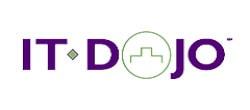MPLS 3.0 – Implementing Cisco MPLS (MPLS)
Multiprotocol Label Switching integrates the performance and traffic-management capabilities of data link Layer 2 with the scalability and flexibility of network Layer 3 routing. So, when used in conjunction with other standard technologies, MPLS gives the ability to support value-added features and service offerings.
Provider Information
IT Dojo
4176 S Plaza Trail
Suite 207
Virginia Beach, VA 23452
Course Overview
To fully benefit from this course, students should have the following prerequisite skills and knowledge: Intermediate to advanced knowledge of Cisco IOS Software configuration Configuring and troubleshooting EIGRP, OSPF, IS-IS and BGP
4176 S Plaza Trail
Suite 207
Virginia Beach, VA 23452
- Providers
- Courses
- Course and Provider Quantity
Learning Objectives
After completion of this course, students will be able to… Describe the features of MPLS Describe how MPLS labels are assigned and distributed Configure and troubleshoot frame-mode MPLS on Cisco IOS platforms Describe the MPLS peer-to-peer architecture and explain the routing and packet-forwarding model in this architecture Configure, monitor, and troubleshoot VPN operations Describe how the MPLS VPN model can be used to implement managed services and Internet access Describe the various Internet access implementations that are available and the benefits and drawbacks of each model Describe the tasks and commands that are necessary to implement MPLS TE
Framework Connections
The materials within this course focus on the NICE Framework Task, Knowledge, and Skill statements identified within the indicated NICE Framework component(s):
Work Roles
Feedback
If you would like to provide feedback on this course, please e-mail the NICCS team at NICCS@mail.cisa.dhs.gov. Please keep in mind that NICCS does not own this course or accept payment for course entry. If you have questions related to the details of this course, such as cost, prerequisites, how to register, etc., please contact the course training provider directly. You can find course training provider contact information by following the link that says “Visit course page for more information...” on this page.
